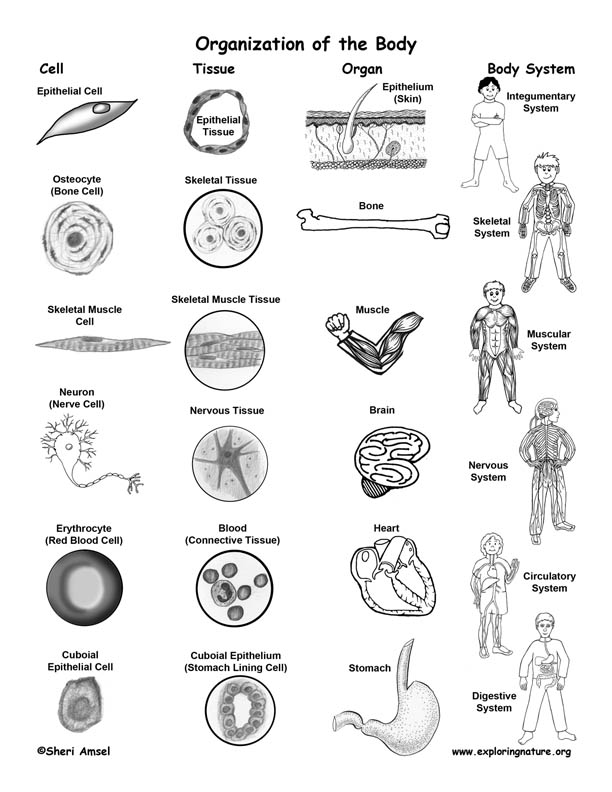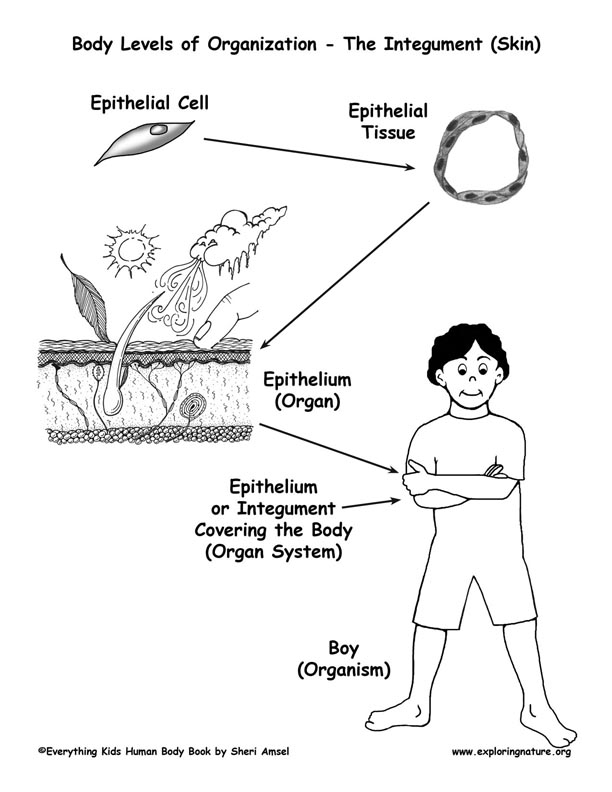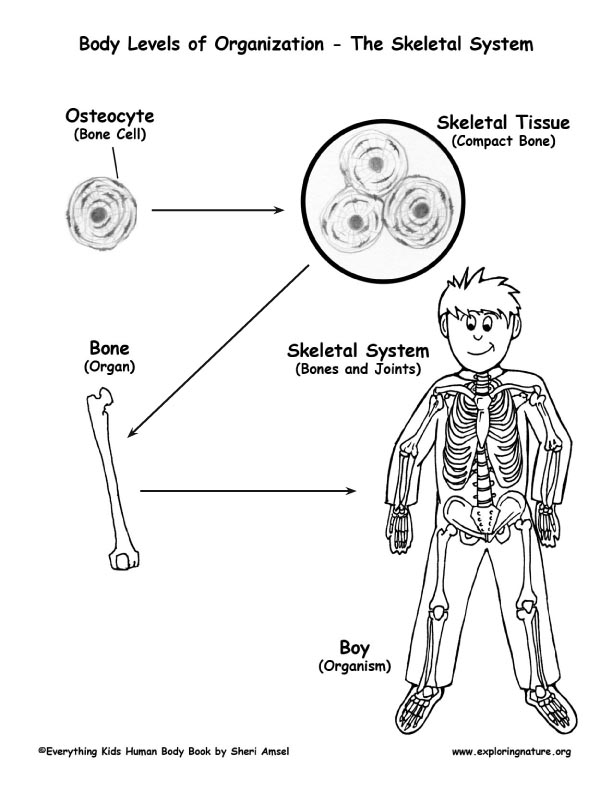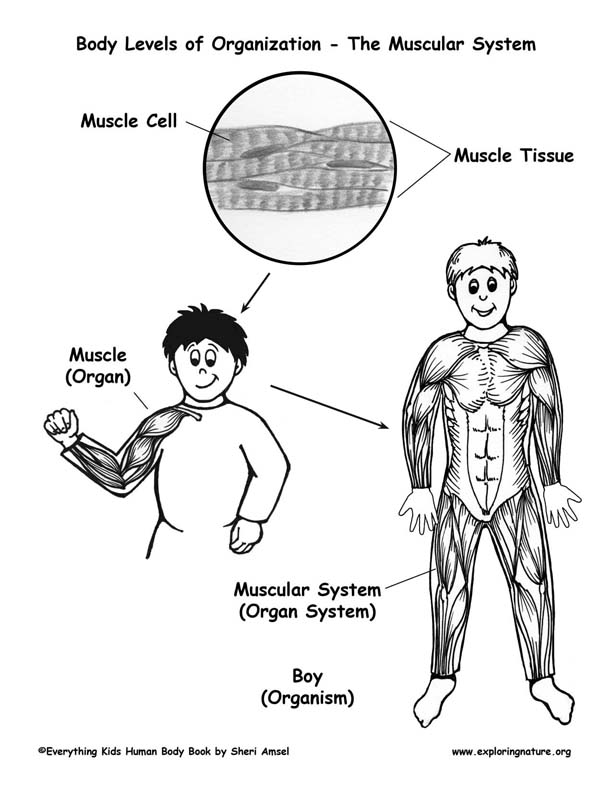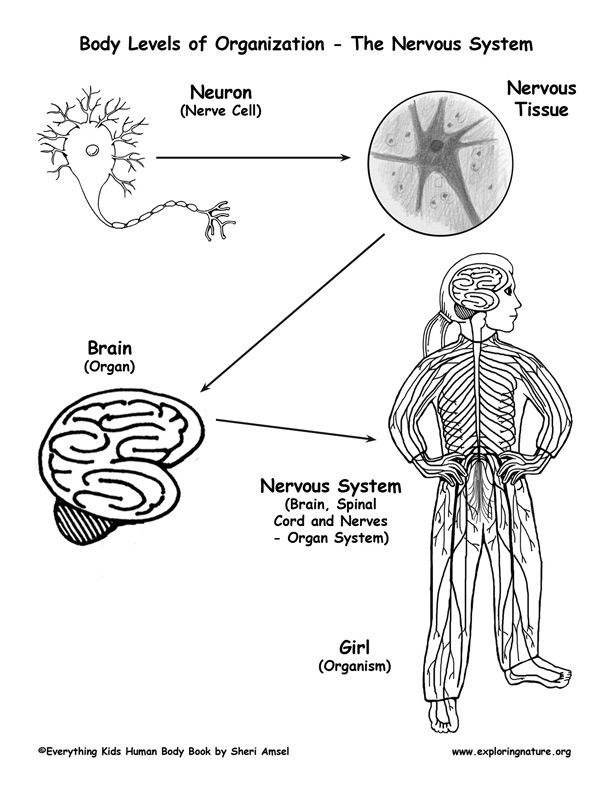

There are many kinds of cells in the human body, each doing their own important job. There are muscle cells, bone cells, skin cells and blood cells – just to name a few. Each kind of cell acts a little differently to suit its role in the body. For instance, muscles cells can stretch and snap back into shape to suit the way a muscle needs to be. A nerve cell, on the other hand, doesn’t stretch or extend, but already has a very, very long tail down which a signal can be sent from one part of the body to another, as needed by the nervous system.
The smallest units of the body – the cells – are individually too small to be seen by the naked eye. Yet when many like cells are together, they form a tissue. Two or more kinds of tissues together form each of our organs, like the heart or lungs. Many organs together form an organ system, like your digestive system or your respiratory system. All the organ systems together form an organism, like you or your dog or a blue whale.
The body's organization goes from cells to tissues to organs to organ systems to a whole working organism.
Look at the Chart above to see how each kind of cell in the body builds into an essential organ system. Then follow them below for a more detailed look at each.
Also check out the Levels of Organization of the Body - Color Poster.
